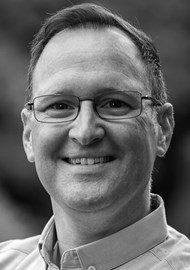Like much of our lives during this period, our planned focus for this issue was suddenly shifted and redefined by the global pandemic. COVID-19 has realigned our personal and professional focus; this issue reflects some of the journey we have been through and will continue on long after the R number has reached an acceptable level. We are defining a ‘new normal’.
In the UK we have received daily briefings from our political leaders, medical officers and leading scientists to help us make sense of the unfolding public health crisis. Ray Clarke summarises the historical contribution of leading Otologist and Epidemiologist, Sir William Wilde, in understanding public health and the strength of good data. Alan Johnson places COVID-19 in its current context as a world event, considering our preparedness from the learnings of other crises and reflects on its long-term impact on the world.
Innovation feels like a much-overused phrase, but there really is no better singular word to describe the processes, practices and technologies we are currently employing.
Even at the beginning of the crisis, the idea that audiologists would be working in an ICU situation would seem, well, ludicrous. Yet up and down the UK this has been the reality. Two articles for July/August describe a true departure from the normal – our thanks to these teams for sharing their very personal experiences. Our audiology Global Ambassadors have also provided their reports from the around the world; a summary report can be found on our COVID-19 News page.
My first piece of learning from Neil Tolley’s article: if I find myself at the same conference as Neil, check travel plans! With many discussions taking place globally on protecting healthcare staff, Neil provides a helpful review of the personal protective equipment (PPE) essential for ENT practice, with particular focus on powered air purifying respirators.
The pandemic has also accelerated the speed of change. We have many times covered mHealth technologies, with the rate of adoption seemingly leisurely. As we look to continue to practise, the adoption of video consultation, remote hearing aid fittings and follow-up has exponentially increased. We look for July/August at ‘low-touch and no-touch’ options for hearing care pathway. In compliment to De Wet and Jay’s article’s, Abram Bailey compares the capability of hearing aid manufacturer’s remote care technologies.
During the height of the pandemic many ENT teams found themselves employing new or repurposed technologies to manage their emergency workload; will these innovations make it into routine practice? Declan leads a review of a selection of innovations driven by COVID-19.
This period has been deeply saddening with the loss of friends, family and colleagues; the scattering of teams; the disruption of normal life. The COVID-19 pandemic has shifted and altered life as we know it. We have lost much. However, we also need to reflect and congratulate on what we have collectively achieved, out of our comfort-zones, with professional boundaries flexed. Our thanks to all of our contributors who have reflected, shared and contributed to our understanding and shaping our response to a global change.




